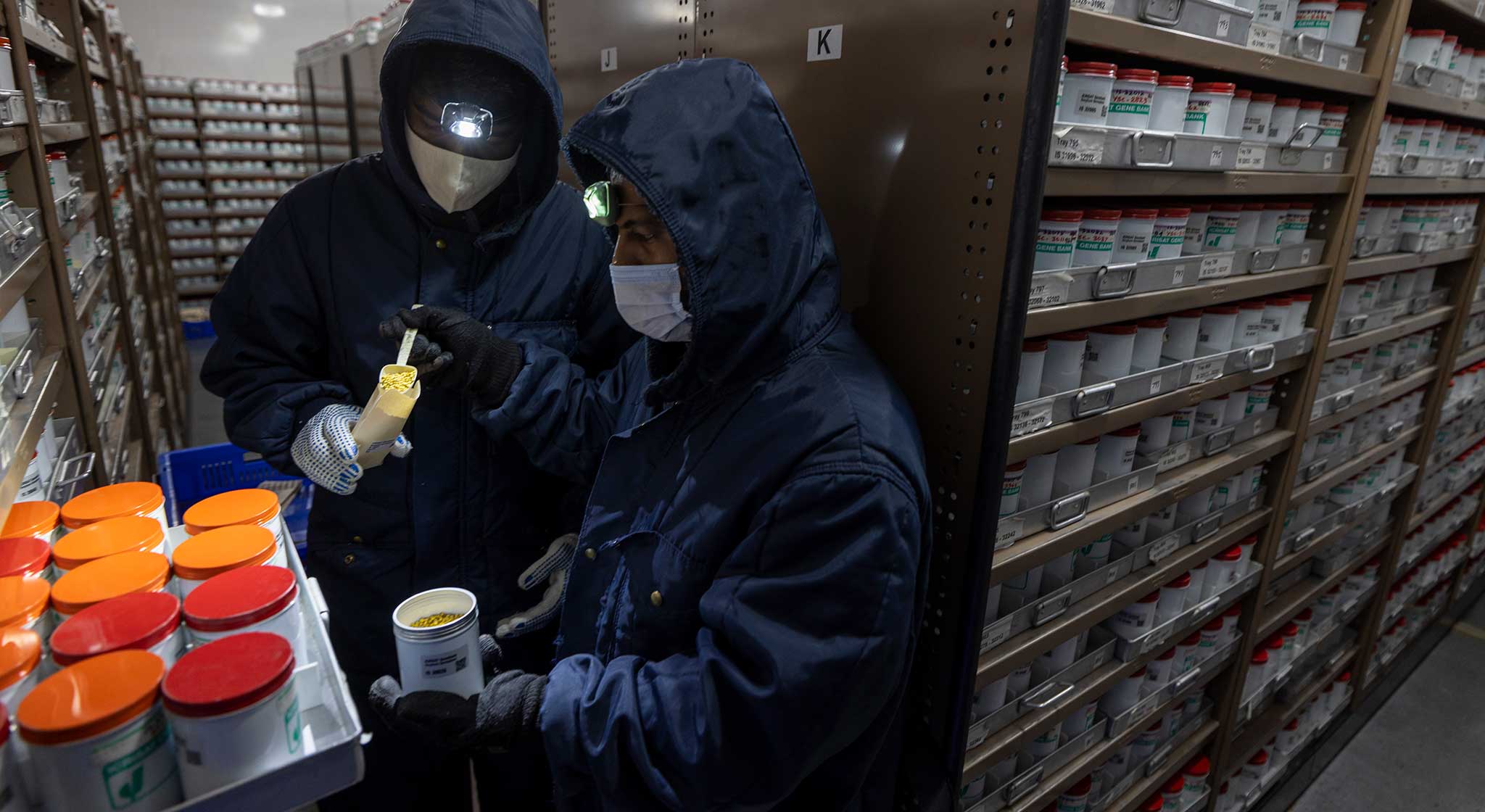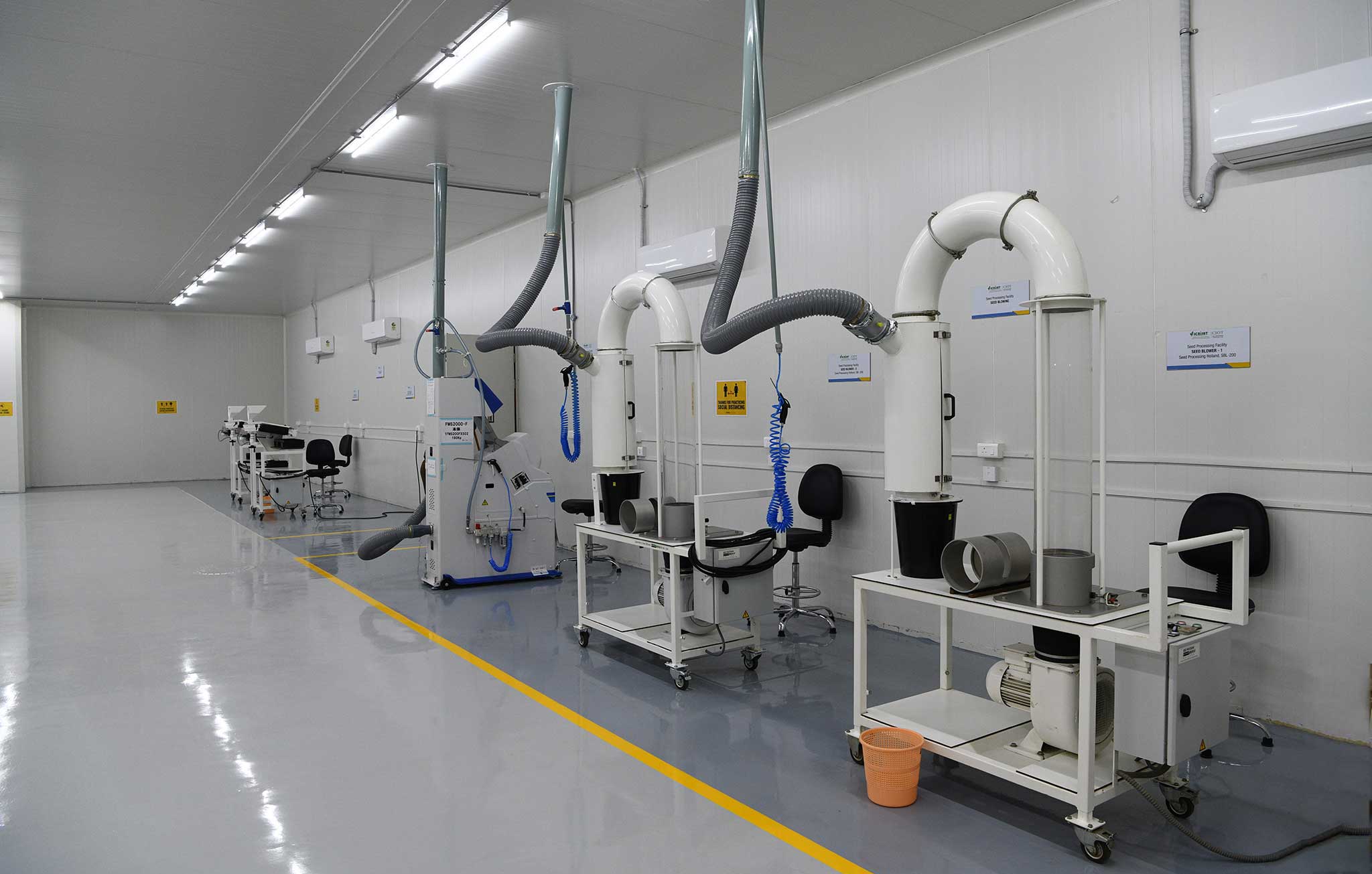Established in 1972, the ICRISAT Genebank located in India is a prominent institution dedicated to the preservation and conservation of crop genetic resources. With a vast collection of over 129,000 germplasm accessions, it safeguards the genetic diversity of 11 vital crops, including Sorghum, Pearl millet, Finger millet, Foxtail millet, Little millet, Proso millet, Barnyard millet, Kodo millet, Chickpea, Pigeonpea, and Groundnut.
This impressive collection has been built through extensive acquisition and collection missions across 144 countries, demonstrating the Genebank's commitment to global collaboration.

By conserving such diverse genetic resources, the ICRISAT Genebank plays a crucial role in addressing food security challenges and contributing to the United Nations Sustainable Development Goals (SDGs), particularly SDG 1 (No Poverty) and SDG 2 (Zero Hunger), within the dryland regions of Africa and Asia, which support approximately 30% of the global population.
The germplasm housed in the ICRISAT Genebank comprises 80.8% landraces, 16.8% breeding lines, advanced cultivars, and genetic stocks, and 2.4% wild and weedy relatives. This diverse collection serves as both a genetic insurance against erosion and a valuable resource for breeding programs seeking tolerance genes for diseases, pests, environmental stresses, improved nutritional quality, and traits related to yield enhancement.
The ICRISAT Genebank's contributions extend beyond preservation. It actively facilitates knowledge sharing and capacity building among National Agricultural Research Systems, empowering scientists and researchers to access and utilize these genetic resources. Over the years, the Genebank has repatriated more than 55,399 accessions to eleven national programs in Asia and Africa, including several landraces that had vanished from their natural habitats. Moreover, it has distributed 1.61 million seed samples to researchers in 150 countries, fostering global collaboration in crop improvement and research.
In addition to the main genebank in India, ICRISAT also operates regional genebanks in Niamey (Niger), Bulawayo (Zimbabwe), and Nairobi (Kenya). These regional genebanks serve as crucial hubs for sub-Saharan Africa, enabling convenient access to regional and global crop diversity.
Augmenting germplasm through collections and acquisitions.
Conservation of germplasm for medium- and long-term storage.
Duplication of germplasm as insurance against biodiversity loss.
Characterization of germplasm for descriptor traits.
Evaluation of germplasm for desired breeding traits.
Regeneration of germplasm for availability upon request.
Free distribution of germplasm to all stakeholders.
Knowledge sharing and capacity building for National Agricultural Research Systems.

Safeguarding Global Food Security
In 2007, ICRISAT took a significant step forward by signing the Standard Deposit Agreement with the Royal Norwegian Ministry of Agriculture and Food. Through this alliance, our germplasm collections have found a safe haven within the renowned Svalbard Global Seed Vault. This exceptional initiative ensures second-level safety duplication, encompassing a remarkable 94% of our total collection.
But our efforts do not stop there. In our relentless pursuit of preserving the invaluable genetic heritage of crops, we have collaborated with esteemed partner genebanks worldwide.
These include IITA in Nigeria, USDA, the World Vegetable Center in Taiwan, ICRISAT Sahelian Center in Niamey, ICARDA, and NBPGR. Through these partnerships, we have achieved first-level safety duplication, successfully safeguarding 84% of our germplasm collection as of June 2023.
By distributing our germplasm holdings far and wide, we actively contribute to a resilient global agricultural landscape. This essential project represents our unwavering commitment to secure the future of agriculture and enhance worldwide food sustainability.